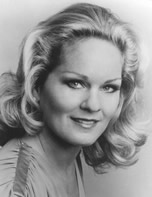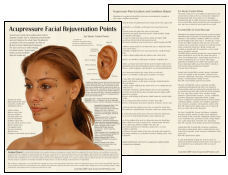Acupuncture & TCM Articles

Articles by Mary Elizabeth Wakefield, LAc, Dipl. Ac., MS, MM
Mary Elizabeth Wakefield has 27 years of clinical professional experience as a healing practitioner, and is a licensed acupuncturist, certified by the NCCAOM, a Zen Shiatsu practitioner, massage therapist, a cranio-sacral therapist, Acutonics® practitioner, opera singer, herbalist and Interfaith minister.
She is a graduate of Tri-State College of Acupuncture in New York City, and has studied with such notable acupuncturists as Carolyn Bengston, Kiiko Matsumoto, Dr. Mark Seem, Arya Nielson, Jeffrey Yuen, Dr. Richard Tan, Fabien Maman, Yitian Ni and Donna Carey.
Her knowledge of facial acupuncture and acupressure is based on the work of Jacques Lavier, the "Father of French Acupuncture." She has also studied extensively with her teacher Carolyn Bengston, who is a master of interdermal needling for the face.
For more information about Ms. Wakefield's Constitutional Facial Acupuncture Renewal™ seminars, please visit her website at www.chiakra.com
The Soul Beneath the Skin
Beyond a "Cosmetic" Approach to the Facial Landscape
By Mary Elizabeth Wakefield, LAc, Dipl. Ac., MS, MM
As an Oriental medicine practitioner, I cannot help but marvel at the resolute manner in which we Westerners continue to view reality – in a reductive fashion as comprising an array of polarities.
Although we persist in maintaining a dualistic and mechanistic perspective of creation, we nevertheless cannot escape the fact that nature incorporates within herself disparate manifestations of truth without apparent conflict. For example, one cannot appreciate the splendor of the light without a prior experience of darkness; day and night are but two halves of a single vibrant unity.
The philosophy of Oriental medicine likewise acknowledges the existence of the primal polarities of yin and yang, but also recognizes as a result of its observations of the natural world, that their energies support, control, oppose and indeed, transform one another in a lively dance of union, harmony and creative wholeness.
However, similar contraries are stipulated within our medicine when facial acupuncture is dismissed as being purely "cosmetic." This is because its milieu comprises the most obvious component of that superficial sheath – the skin – within which the more important metabolic "machinery" and anatomical "infrastructure" are housed. It is obvious to even the most casual observer that this covering is anything but impervious to the ravages of time. Moreover, the violent but obscure way in which the skin is manipulated by advocates of plastic surgery who increasingly dominate the dialogue around aging, might serve to reinforce the idea that its connection to a more profound level of human functioning is merely tangential. There are even those who would regard it as yet another fashion accessory; to be adorned, even sculpted (in the case of the face), in accordance with one's desires and, given the requisite technological advancement, to be discarded in favor of next year's model.
Such a myopic perspective is in direct contrast to an experience of the intimate relationship between the evolving topography of the facial/somatic landscape and the spiritual essence of the individual that is invoked in the treatment protocols of constitutional facial acupuncture renewal.
Our skin mediates the most important transactions of our lives. Skin is key to our biology, our sensory experiences, our information gathering and our relationships with others.1
Since the skin reflects our ancestral roots, identity, state of health and age, it telegraphs to the world information about us on the psychospiritual as well as the physical level. In contrast to the newly emergent Western viewpoint of skin as disposable commodity (cited above), Oriental medicine has much to say regarding the treatment of this vital bodily organ as it evolves through time.
The Oriental Medical View of Skin Aging

In Chinese medicine, the progress of skin aging is considered to relate to two components: the landscape of qi, blood and fluids and the effect of climatic factors. When acupuncture needles are placed at crucial junctures in the facial terrain, the flow of fresh blood ensues and immerses the area being treated. This enhanced circulation of qi and blood transports increased nutrients and oxygen to the cells. It is believed that the body interprets the site of the insertion of an acupuncture needle as a "positive" injury. The result is to "plump up" the tissues and fat cells by the production of greater levels of collagen elastin; although there have yet to be any scientific studies to support this. However, there is a recent case study on integrating connective tissue and nervous-system mechanisms in cases of chronic low back pain that touch upon the effect of tissue micro-injury. The authors hypothesize, "Tissue injury and histamine release is a powerful driver of fibroblast collagen synthesis."2
Because certain types of facial acupuncture treatments address not only acupuncture points but also the facial muscles, they are considered to have a beneficial effect on sagging skin. This gradual (and seemingly inevitable) downward slide of the facial landscape is, in no small part, due to the impact of many decades of Earth's gravitational pull upon the individual human organism. However, a constitutional approach to the problem reharmonizes the functioning of the entire person, striking at the root causes of aging itself rather than merely seeking to eliminate its traces in the complexion by whatever cosmetic means available.
Oriental medicine regards the skin as a "third lung," with its protective function, embodied in the wei qi. External climatic factors (e.g., damp, heat, cold, wind, etc.), while immediately impacting the lung/large intestine, also manifest outwardly on the skin. Other detrimental influences include the long-term consequences of exposure to the sun, airborne pollution, cigarette smoke and other toxins, and hormonal insufficiency.
In addition to the above, the eight extraordinary meridians address hormonal imbalances and are considered to encode fundamental hereditary aspects of the individual – what Oriental medicine terms the jing. Thus, using them in the context of a facial acupuncture treatment can have a profound impact on both the visible and implicit symptoms of the skin-aging process, promoting longevity, greater quality of life and spiritual harmony.
Finally, I would offer that the face – the principal conduit through which the changing panoply of our feeling life is communicated to the wider world – is the gateway to the soul. It is the most emotive part of the body, and the single most important feature of the human being, upon which the vast majority of our notions of personal identity are dependent. In transforming the skin of the face, we touch upon the capacity to renew the entirety of our being and to transfigure the soul beneath the skin.
Author's Note: Some article content contributed by MichelAngelo, director of astrological medicine & musical studies, acutonics.
Resources
Jablonski NG. Skin: A Natural History . Berkeley, CA: University of California Press, 2006. . Berkeley, CA: University of California Press, 2006.
Langevin HM, Sherman KJ. Pathophysiological model for chronic low back pain integrating connective tissue and nervous system mechanisms. Medical Hypotheses, 2007;68(1):74-80.
|
